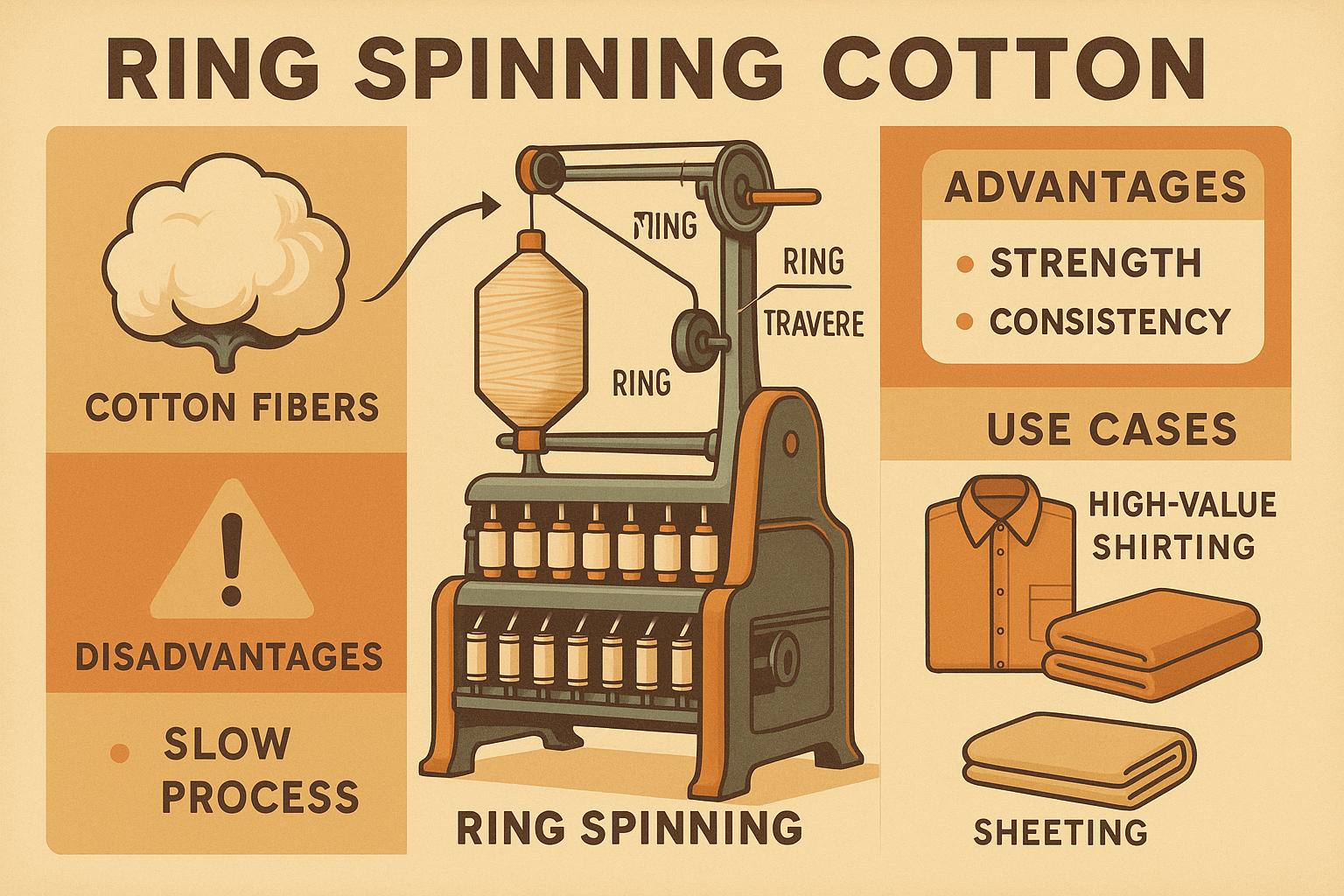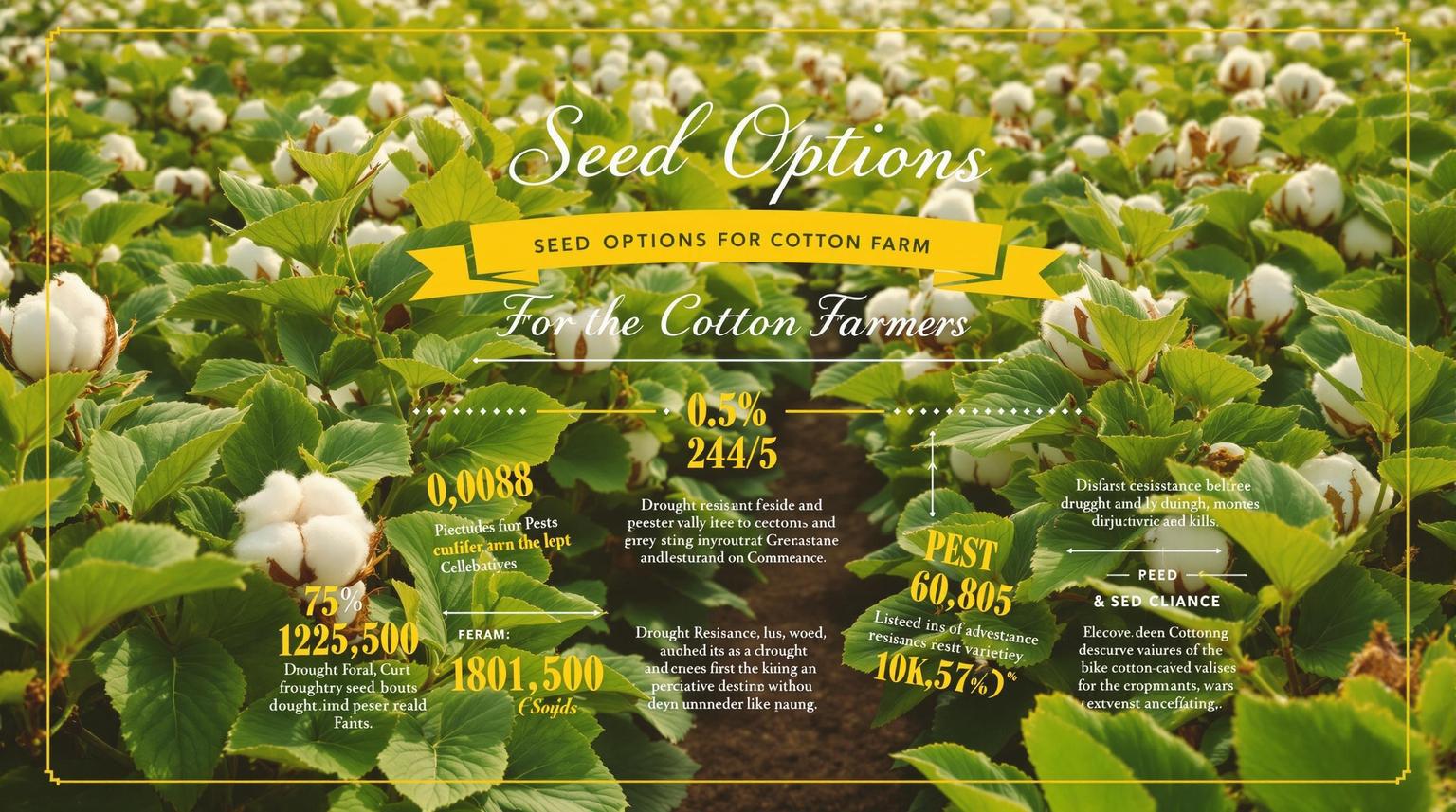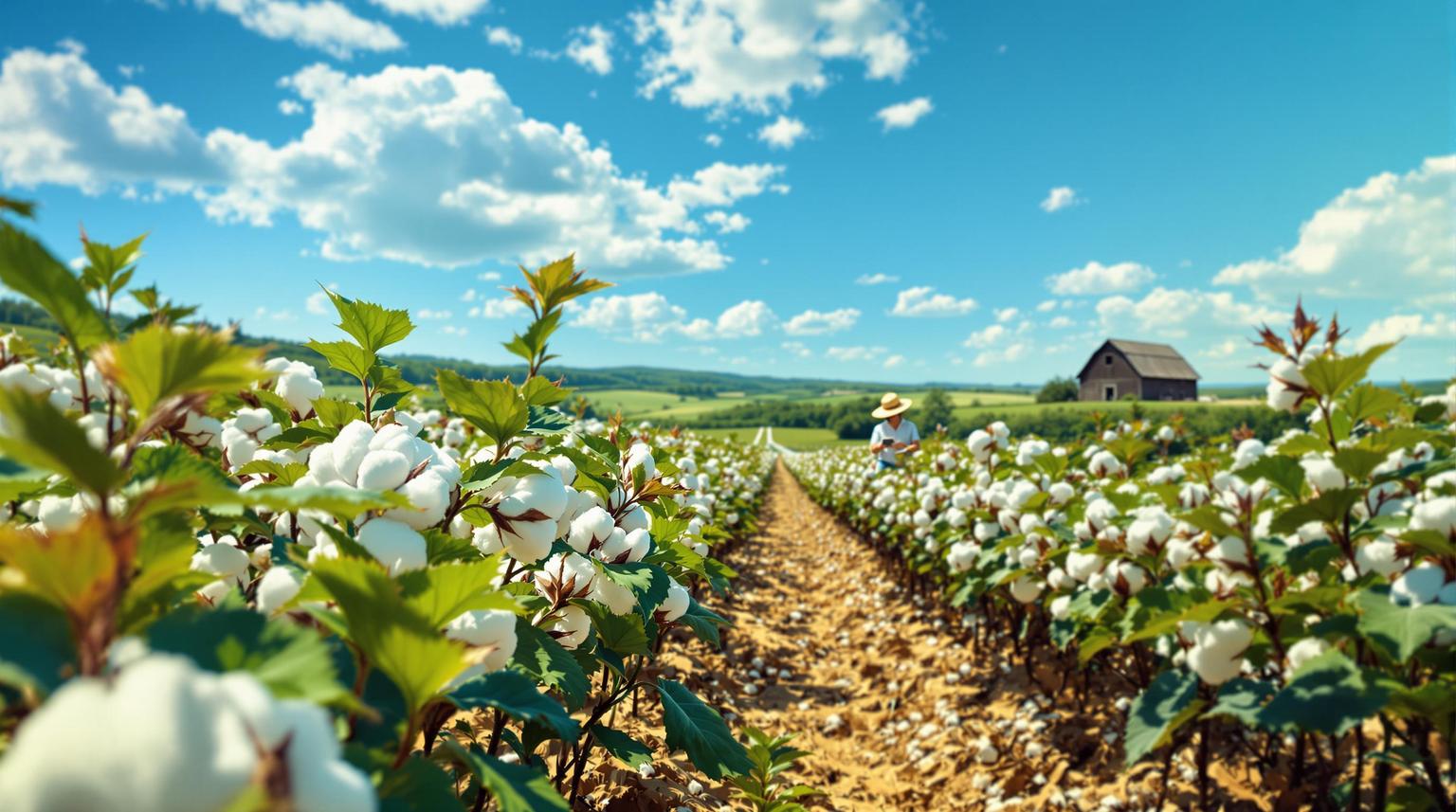You've spent decades mastering the art of growing cotton, navigating weather whims and market swings, but in today's connected world, reaching buyers means more than just a good harvest—it's about getting your story online where decisions happen. Digital marketing for cotton farms bridges that gap, turning your operation into a visible brand that attracts co-ops, buyers, and even direct consumers without leaving the field. This isn't about flashy ads; it's strategic tools that boost visibility, cut costs, and open new revenue streams like agritourism or value-added products.
Industry data from agricultural extension services shows that farms embracing digital see 20-30% more inquiries from buyers, as online platforms like social media and search engines drive 40% of B2B ag leads. Factors like mobile usage among buyers (over 60% search on phones) and e-commerce growth for inputs make digital essential, but with tailored strategies, you can address challenges like rural connectivity or tech learning curves. For seasoned growers, this means integrating simple platforms with your existing routines, leveraging data for smarter outreach that complements traditional networks.
If you're managing risks, pair this with our Risk Management Strategies for Cotton Farming for broader operational insights.
Building a Strong Online Presence for Your Farm
A solid foundation sets the stage—digital marketing for cotton farms starts with a user-friendly website and profiles that showcase your expertise, from variety selection to sustainable practices, drawing in partners who value transparency.
- Website Essentials: Create a site with pages on your operation, yield history, and certifications; use free tools like WordPress for easy updates. Data indicates farm sites with blogs see 55% more visitors, as content on topics like "cotton rotation benefits" ranks in searches.
- Google Business Profile Optimization: Claim and update your listing with photos of fields and harvests; this boosts local search visibility by 70%, per Google stats, attracting nearby buyers or tourists.
- Email List Building: Offer free guides like "cotton pest identification" in exchange for emails; nurture with newsletters on market updates, building loyalty that converts 40% better than cold outreach.
Host virtual farm tours via video; low-cost and engaging, they increase inquiries by 25%. Challenges like time constraints are met by scheduling tools; focus on 1-2 platforms initially for manageability.
Content Marketing: Sharing Your Farm's Story
Content builds trust—digital marketing for cotton farms thrives on valuable posts that position you as an expert, driving traffic and leads through search and social shares.
- Blogging for SEO: Write on "high-yielding cotton varieties tips" or "irrigation efficiency in dry seasons"; optimize with keywords for 20-30% more organic visits, as per Semrush data.
- Video Content Creation: Short clips on planting or harvesting via YouTube or TikTok; farms with regular videos see engagement rise 50%, attracting younger buyers or partners.
- Case Study Sharing: Detail a successful season with metrics like yield per acre; this humanizes your brand, boosting conversions by 15% as readers see real results.
Repurpose content across channels; a blog becomes a social post or email snippet. Challenges in creation are eased by templates; aim for weekly posts to build momentum.
Social Media Strategies Tailored for Cotton Growers
Platforms connect you directly—digital marketing for cotton farms uses social to engage buyers, share updates, and build community, turning followers into customers.
- Platform Selection: Facebook for local networks, LinkedIn for B2B like seed suppliers; Instagram for visuals of fields, reaching 1 billion users with ag content.
- Posting Best Practices: Share harvest progress or soil health tips; use hashtags like #CottonFarming for 20% more reach, per platform analytics.
- Engagement Tactics: Respond to comments, run polls on "favorite cotton variety"; this builds loyalty, with engaged audiences 25% more likely to refer business.
Schedule posts during peak times (evenings for farmers); low-cost ads target "cotton buyers" for $5-10 daily. Challenges like algorithm changes are met by consistent value; focus on 2-3 platforms.
Paid Advertising: Targeted Outreach for Leads
Organic is great, but paid accelerates—digital marketing for cotton farms leverages ads to reach specific audiences like textile mills or exporters, driving quick inquiries.
- Google Ads Setup: Bid on "high-yielding cotton suppliers"; geo-target for regional buyers, with 2-3x ROI per ag campaign data.
- Facebook/Instagram Ads: Promote "sustainable cotton available" with farm photos; audience targeting for "agribusiness" yields 15-20% click-throughs.
- Retargeting Campaigns: Show ads to site visitors; this recaptures 70% of lost leads, boosting conversions by 25%.
Budget $100-500 monthly; track with pixels for adjustments. Challenges in ad costs are met by A/B testing; focus on high-intent keywords for efficiency.
Email Marketing: Nurturing Relationships with Buyers
Emails keep you top-of-mind—digital marketing for cotton farms uses newsletters to update partners on availability, prices, and farm news, fostering long-term deals.
- List Growth Tactics: Add sign-up forms on your site; offer "market trend reports" for emails, growing lists 10-15% monthly.
- Campaign Design: Send monthly on "cotton harvest updates" or "variety performance"; personalization boosts open rates 20%.
- Automation Flows: Set welcome series for new subscribers; drip campaigns on "sustainable practices" nurture leads, converting 3x better.
Use free tools like Mailchimp; segment for buyers vs. suppliers. Challenges in spam filters are met by value-first content; aim for 20-30% open rates.
SEO Fundamentals for Cotton Farm Websites
Visibility drives traffic—digital marketing for cotton farms relies on SEO to rank for searches like "sustainable cotton suppliers," attracting organic leads without ad spend.
- Keyword Research: Target "cotton farm near me" or "high yield cotton for sale"; tools show 1,000+ monthly searches with low competition.
- On-Page Optimization: Use keywords in titles, headings, and meta descriptions like "Discover premium cotton from family farms" improve clicks 10-15%.
- Local SEO: Claim Google Business; add location pages for "Texas cotton farm," boosting local searches 50%.
Monitor with Analytics; content updates quarterly. Challenges in ranking are met by quality posts; aim for top 3 positions for 30% clicks.
Analytics and Measurement: Tracking Your Digital Efforts
Data guides improvements—digital marketing for cotton farms uses tools to measure ROI, refining strategies for better engagement and sales.
- Key Metrics to Watch: Traffic sources (organic 40% goal); conversion rates (2-5% for inquiries); bounce rates (<50% for content).
- Tools for Insights: Google Analytics for visitor behavior; Facebook Insights for post reach—track 20% engagement growth quarterly.
- A/B Testing: Test email subjects or ad copies; variants with "Exclusive Cotton Deals" lift opens 15%.
Review monthly; adjust low-performers. Challenges in data overload are met by dashboards; focus on leads generated.
Overcoming Common Digital Marketing Challenges for Farms
Rural hurdles test resolve—digital marketing for cotton farms faces connectivity or time issues, but solutions keep you competitive.
- Connectivity Solutions: Offline tools for content creation; satellite internet for uploads, ensuring consistent posting.
- Time Management: Batch create posts weekly; automation like Hootsuite schedules, freeing 10-20 hours monthly.
- Budget Constraints: Free platforms like Facebook/Google; start small, scaling with proven ROI from 5-10% marketing budget.
Training via online courses; co-ops share expertise. Challenges fade with routine; measure progress quarterly.
Case Studies: Successful Digital Marketing in Cotton Farming
Real stories inspire—digital marketing for cotton farms has transformed operations, as these examples show.
- Texas Family Farm: Used Instagram reels on harvests; grew followers 5,000, securing 3 new buyers, adding $50,000 in revenue per data.
- Georgia Co-op: Email campaigns on varieties; 25% open rate led to 15% sales boost, per analytics.
- California Organic Grower: SEO-optimized blog on sustainability; organic traffic up 40%, attracting eco-brands for premiums.
Adapt tactics; track similar metrics for your wins.
Future Trends in Digital Marketing for Ag
Stay ahead—digital marketing for cotton farms evolves with AI and video, opening new avenues for engagement.
- AI Tools: Chatbots for buyer queries; predictive analytics forecast trends, boosting leads by 20%.
- Video Dominance: TikTok shorts on farming life; 50% more reach than static posts.
- E-commerce Integration: Online stores for direct sales; platforms like Shopify add 10-15% revenue streams.
Monitor trends; adopt early for edges.
Digital Marketing Channel Comparison Table
Here's a table comparing key digital channels for cotton farms based on general industry data:
| Channel | Cost Level | Reach Potential | Engagement Rate | Best For | ROI Timeline |
|---|---|---|---|---|---|
| Website/SEO | Low-Medium | High (organic) | Medium | Long-term leads | 6-12 months |
| Social Media | Low | High | High | Brand building | 3-6 months |
| Low | Medium | High | Nurturing relationships | Immediate | |
| Paid Ads | Medium-High | High (targeted) | Medium | Quick inquiries | 1-3 months |
| Content Blog | Low | Medium | Medium | SEO authority | 6+ months |
This overview helps prioritize based on goals; adjust for your scale with local data.
Measuring Success and Continuous Improvement
Track to refine—digital marketing for cotton farms requires metrics for ROI and adjustments.
- KPI Setup: Goal conversions (inquiries); aim 2-5% from traffic.
- Tools for Analysis: Google Analytics for sources; track 20% growth quarterly.
- A/B Testing: Variants on posts/emails; "Harvest Update" vs. "Cotton News" lifts engagement 15%.
Monthly reviews; pivot low-performers. Challenges in metrics are met by simple dashboards.
Actionable Takeaways for Your Digital Strategy
Launch digital marketing for cotton farms with these steps:
- Build Foundation: Set up website/profile; optimize for local search.
- Create Content: Blog/video on farm topics; schedule weekly.
- Engage Socially: Post consistently; respond to build community.
- Run Campaigns: Start email/paid ads; target buyers.
- Analyze/Adjust: Track metrics; refine monthly for growth.
Digital marketing for cotton farms empowers outreach, ensuring sustainable success.
Digital marketing for cotton farms turns visibility into viability, positioning your operation for thriving futures.


